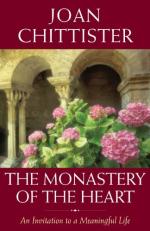|
This section contains 2,620 words (approx. 9 pages at 300 words per page) |

|
Although monasteries were not originally conceived as centers for learning or development of the arts, it was natural that they came to fulfill these functions. A number of monks were highly educated men, some from noble and wealthy families that could afford private teachers for their children. As monks, these well-educated and charitable men were naturally inclined to promote learning; in some cases they opened the first schools in a region. For example, in 1055, Benedictine monks at the Millenary Monastery of Pannonhalma founded the first school in Hungary and later wrote the first document in the Hungarian language.
Other monks took advantage of their opportunities to study during their years in the monastery. Literate monks helped their brothers learn Latin so they could read the Holy Scriptures and other works. They also taught the boys who came to the monastery as oblates...
|
This section contains 2,620 words (approx. 9 pages at 300 words per page) |

|




